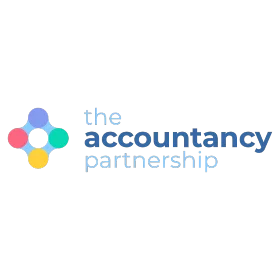

Disclaimer: We may earn a small commission if you click on links on this page. This helps us keep producing free content.

If any of your accounts are late, or inaccurate, there are big fines to face. And yet, no matter how many times businesses are warned, thousands fail to deliver. In fact, it was reported that businesses in London and Birmingham have been some of the top offenders for filing late, with over 200,000 UK companies facing hefty fines for missing the Companies House deadline in 2019. Your year end accounts are a pretty big one to get under control. Whether you choose to do it alone, or work with a trusted accountant, we’ve put everything you’ll need into this handy year end accounting checklist. Let’s get down to business, shall we?
Overall Rating: 9.4 Read Full Review Low fixed monthly fee No minimum terms Unlimited adviceA big benefit of being a limited company is that there is a wealth of allowable expenses that you can claim for, provided that they are ‘wholly and exclusively’ for business use. This can be anything from Travel costs, equipment costs, pension contributions, clothing, eye tests and more. To make sure that you’re not missing out, check out our list of 25 allowable expenses that you can claim as a limited company. Each expense that you declare will help bring down your Corporation Tax bill. So it’s important that you remember to add all your expenses before doing your accounts.
If you have employees, you will also need to make sure that your payroll and employee benefits are correct and up to date. In addition, you need to ensure that any employee expenses have the right receipts and information attached to them. This is incredibly important because if an employee claims costs and fails to give the right receipts, you could be liable for tax or NI errors.
You should really be doing this one as you are going, but if you haven’t already – back all your data up. There will be nothing worse than going through all this stress and bother if you end up losing all your progress. Backup, backup and backup again.
Now you’ve got all the paperwork and finances right in front of you, it’s time to put them all together and produce the statutory accounts that you need to submit for Companies House. First, you need your income statement (also known as a profit and loss statement). This is a single page that summarises all your income and expenses over the year. For example, your income statement could look like this:
Turnover Sales: Total turnover: Cost of sales Purchases: Labour: Total Cost of Sales: Gross profit: Administrative costs Advertising & marketing: Audit & accountancy fees: General expenses: Light, power & heating: Printing & stationary: Rent: Telephone and internet: Subscriptions: Travel: Total Administrative Costs: Operating profit: Profit on Ordinary Activities Before Taxation: Profit after Taxation:
You would just need to fill in the blanks and edit the document to fit your company. Depending on the accounting software that you use, you might find that you can automatically generate these reports. Next, you have to create your statement of financial position (formerly known as a balance sheet). This will go into a little more detail about your accounts, showing information such as your fixed and current assets, trade and other debtors, creditors and bank balances. For example, your statement of financial position could look like this:
Called up share capital not paid Fixed assets Tangible assets Current assets Other debtors Bank Prepayments and accrued income Creditors: amounts falling due within one year VAT PAYE_NI Pension contribution Director Loans Net Current Assets (liabilities) Total assets less current liabilities Creditors: amounts falling due after more than one year Provisions for liabilities Accruals and Deferred income Net assets Capital and reserves Share capital Retained profit brought forward Current years profit and loss
If you class as a micro-entity, you do not need to supply a director’s report.
Finally, you will need to submit an auditors report that states the responsibilities of the auditor and company directors, that the accounts were prepared properly in accordance with accountancy practices and that the statements give a true and fair view of the company’s assets, liabilities, and financial position. If your limited company classes are small or qualify for an audit exception, you do not need to include this with your year end accounts.
Thankfully, submitting your company tax return to HMRC is a lot less involved than your statutory accounts. Using the information you’ve already uncovered, you just need to fill out your tax return detailing your income, any tax allowances and expenses.
Then the remaining profit will be used to work out how much Corporation Tax you owe.
Once everything is prepared and ready, all that’s left to do is submit and pay your Corporation Tax bill. And that’s it for another year – phew!
The Business Success Planner
Set clear goals for your business
Plan and manage your time more effectively
Brainstorm ideas and log inspirations
Stay motivated and encouraged

If you don’t want to do your year end accounts by yourself, you can save time and effort by getting an accountant on board to take care of this process for you.
To file your year-end, your accountant will need access to all of your financial records and information. So, do you remember everything mentioned in that list before? Yep, that’s what they’ll need.
But once they have this information, they’ll be able to connect the dots, spot any errors and organise all of your papers to ensure everything is in order and submitted correctly and on time. That saves you a lot of hassle and ensures you’ll never get fined for late submissions.
The only thing your accountant can’t do is chase up your late invoices. After all, they’re not mafia ‘heavies’ armed with hammers to threaten and force your clients to pay up!